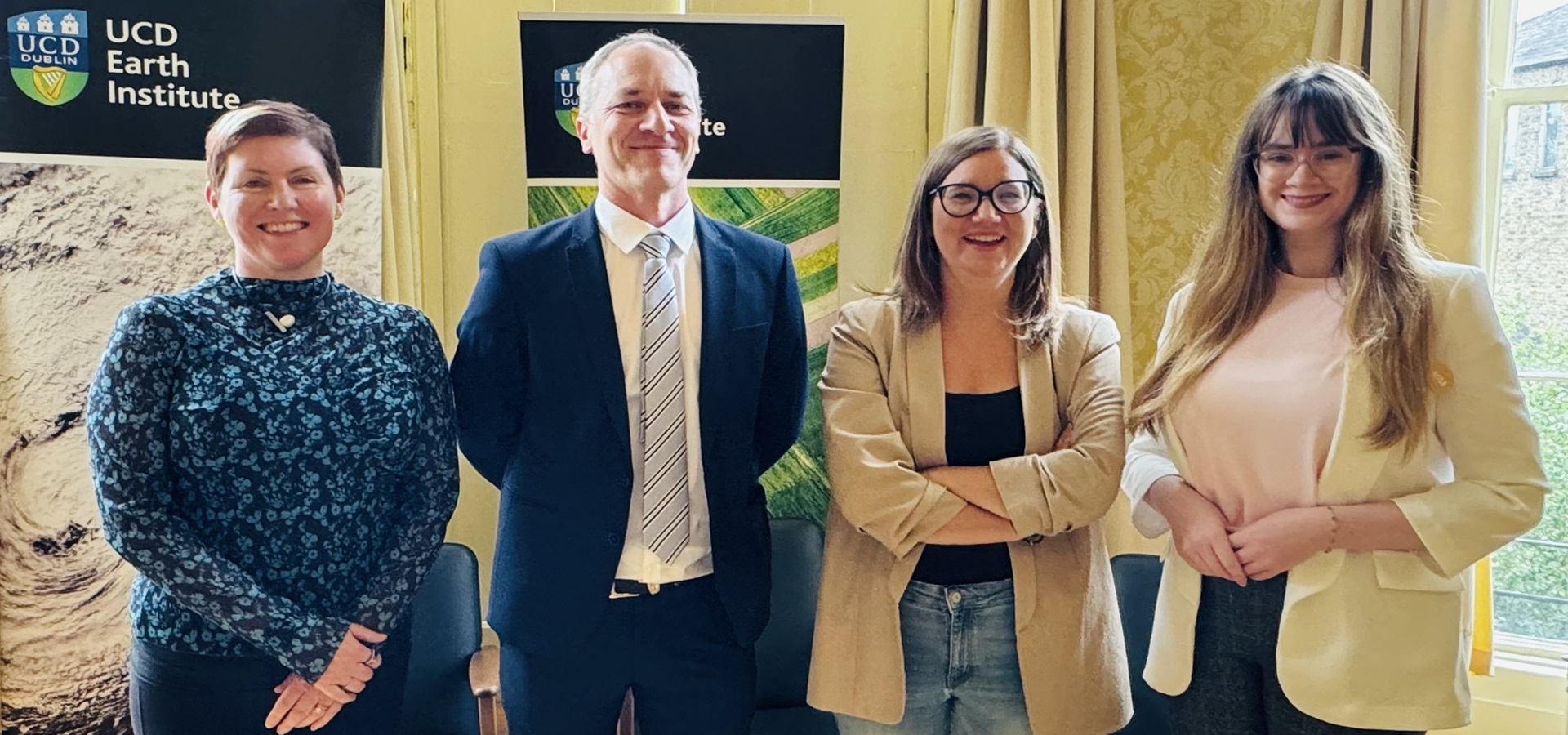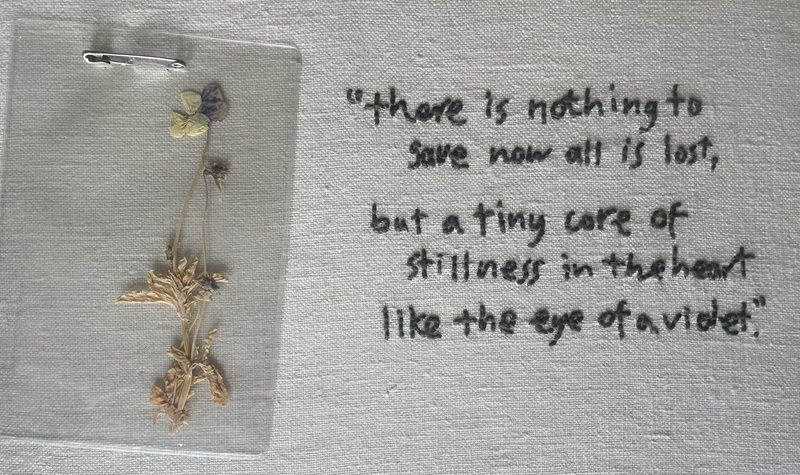Writing tips for the UCD Earth Institute blog series including the A-Z of Environmental, Climate and Sustainability Research, a series of short essays or blog posts by UCD postdoctoral and postgraduate researchers, technical and research support staff, about their work.
The series is developed and curated by the Earth Institute Associate Member Committee led by Hannah Gould, a PhD student at BiOrbic and the UCD School of Architecture, Planning and Environmental Policy, and Earth Institute Communications and Engagement Officer Liz Bruton.
If you'd like to submit a piece for the A-Z series or have a suggestion for another topic we should cover do get in touch!
Writing Tips
Last updated 27/09/2023
The A-Z of Environmental, Climate and Sustainability Research is a series of short essays or blog posts by UCD postdoctoral and postgraduate researchers, technical and research support staff. The series is structured and written in language intended for a general and informed audience who are interested in learning more about the work of UCD researchers working in environmental and sustainability research.
A blog post is a good way to communicate your research to both academic and non-academic audiences and is written and formatted quite differently to a journal article.
Below, we have included tips on structure, content, images, and editing and publishing a blog post for our A-Z of Environmental, Climate and Sustainability Research blog series.
Structure:
- Title / Topic: Chose a title or topic of your research connected environmental and sustainability
- Summary: Include a short description or summary of 25-30 words and a longer description or summary of 50-60 words which should grab the readers’ attention, and can be used to promote the blog post on social media. Twitter has a 280-character limit including web address.
- Entries should be around 500-1000 words and include around 2-3 images related to the topic (see also below)
- Author name and biography: One paragraph including link(s)
- Further reading: around three to five pieces of further reading, preferably open access and available online
Content:
- Try to write with a conversational, positive and friendly tone and keep sentences short and simple
- Think about what makes your topic interesting – what facts and images will help grab the readers’ attention
- Keep the blog post / essay succinct and interesting for those who may not be specialists – the audience is interested and intelligent but may not be familiar with technical terminology, jargon or acronyms (which should be explained)
- Words or phrases referring to additional content need to include relevant links to reliable sources, e.g. Nature or a journal article etc
- Blog posts or essays should be about one topic, and not a summary of an entire project – background and context should be summarised
- Blog posts or essays should use an “inverted pyramid” structure which is opposite to a journal article: content should start with the main outcomes and conclusions in a way designed to catch the readers’ attention before moving onto the core story and concluding with the “take away” message and link to further reading

Structure of a blog post from How to write a great blog post on your research topic? A brief guide in 9 steps by Simon A. Perth at https://www.doi.org/10.34834/2019.0002
- Provide two or three landscape and high-res images, with credit and captions
- Try to include at least one image which includes people
Images and Image Permissions:
- UCD Earth Institute staff can help with selecting and finding suitable images and how these should be credited and captioned
- Images should be photographs you’ve taken yourself or ones you have permission to use from the person who took the photograph
- GDPR: Only include people’s faces are visible if the person is you or if you have the subject’s permission
- Most images from the internet cannot be used without permission from the person who took the image and sometime the subject unless the image is made available freely or licensed via Creative Commons, e.g. Unsplash, Creative Commons image search, Wikimedia Commons etc, and these need to be credited appropriately
Editing and publishing and what happens next:
- Earth Institute staff and associate committee members will help with proofreading and editing the blog post and posting it to our website
- Blog posts are published on the UCD Earth Institute blog series and shared via the Earth Institute Twitter account and Earth Institute LinkedIn group
- We encourage you to share your blog post via social media channels!
UCD Writing Centre
The UCD Writing Centre provides free, one-to-one tuition and a range of workshops on all aspects of the writing process. They also provide handouts and videos about various aspects of writing. They are based in Link Space 2 of the James Joyce Library and also offer a limited number of online sessions.
Other UCD blog series
UCD Library Cultural Hertiage Collections: Discover and explore the historical treasures housed within UCD Library's archives, special collections, National Folklore Collections, and digital library.
UCD School of Politics and International Relations (SPIRe): Find all of the latest news on SPIRe’s ground-breaking research, upcoming speakers and events, and new programmes.
UCD Science Student blogs: Learn more about Science, Actuarial & Financial Studies, Sustainability and Computer Science from the experiences of our students, both past and present.
Further reading
UCD Institute of Discovery, Writing tips for The Conversation: https://www.ucd.ie/discovery/storiesofdiscovery/writingtipsfortheconversation.html
UCD Promote Your Research: Blogs and articles: https://www.ucd.ie/promoteyourresearch/create/blogsandarticles/
Sarah Boon, Science Blogging 101: https://medium.com/@snowhydro/science-blogging-101-c4f232f6f99a
JSTOR Daily – engaging and accessible daily blog post based on one or more journal articles available via JSTOR: https://daily.jstor.org/
Max Planck Institute for the History of Science (MPIWG), Berlin ‘feature stories’ series: https://www.mpiwg-berlin.mpg.de/featurestories
Simon A. Perth, How to write a great blog post on your research topic? A brief guide in 9 steps: https://www.doi.org/10.34834/2019.0002
Anne Steenstrup-Duch, How to write a science blog: https://blog.sintef.com/how-to-write-a-science-blog/
The A-Z of Environmental, Climate and Sustainability Research is a series of short essays or blog posts by UCD postdoctoral and postgraduate researchers, technical and research support staff, about their work.
The series is developed and curated by the Earth Institute Associate Member Committee led by Hannah Gould, a PhD student at BiOrbic and the UCD School of Architecture, Planning and Environmental Policy, and Earth Institute Communications and Engagement Officer Liz Bruton.
If you'd like to submit a piece for the A-Z series or have a suggestion for another topic we should cover do get in touch!


.jpg)